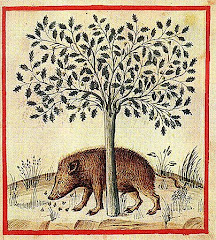So, I'm 6 posts in to my brand new blog and so far 5 have skirted around talking specifically about medicinal plants. It's time to remedy that, and what better remedy than the humble dandelion - possibly my favourite herb of all!

The dandelion (Taraxacum officinale) is actually an aggregate made up of hundreds (I might be exaggerating a bit) of micro species which all differ in some way from each other. If you look closely at a few growing round and about, you may spot some of the differences between plants. Most obviously, the average dandelion can feature anything from broad, shallowly lobed, wavy margined leaves through to soft, narrow, but spiky-looking toothed leaves which do far better justice to the origin of the name "tooth (dent) of the lion".
I am particularly partial to the dandelion for several reasons. First, my habit of siding with the underdog leads me straight to this plant which is so regularly dismissed by gardeners as a troublesome weed. How can it be? Just look how it grows! A hardy perennial which begins blooming in early spring and can carry on right through the hottest summer. Resistant to nearly every pest and disease you could throw at it. Beautiful architectural seed heads - the stuff of childhood time-telling fancies. Such pretty flowers too. I remember being asked to explain the dandelion to some Indian visitors once who were struck by its beauty and wondered if they could grow one at home.
The seeming invincibility of the dandelion and its abundance in our habitat is another clue to my fondness for it. It is a widespread belief amongst herbalist that nature has provided what we most need to survive in the greatest quantities. So it follows that the dandelion must have something truly valuable to offer us (or else the gardeners wouldn't complain so bitterly about them). Likewise, science would tend to support the idea that what can survive the rigours of nature so effectively, must contain a cornucopia of protective and reparative substances and these, it may surprise some to know, are often the active principals in a plant which are also so beneficial to human health.
I feel I've established a foundation for the worth of the dandelion now, but what does it actually do? Well, this question is a big one - the plant is just that brilliant! Broadly speaking there are two things the dandelion is most famous for. Firstly, it contains a good few bitter principles which are specific to the liver and digestive system. Bitters help to stimulate the release of gastric juices and, although they can be difficult to stomach in those who have enjoyed a sugary Western diet for so long, they can be acclimatised to when given a chance. So, as long as you don't have gallstones, dandelion can make a wonderfully health promoting addition to your diet.
I personally find only the oldest leaves are too much to be pleasant these days, whilst my favourite part is the flower which I find so delicate and sweet (yes, top-to-toe, the whole plant is edible). Bizarrely, some of those who have been convinced to try a flower have complained of extreme bitterness - a response I simply can't fathom. When I find it I'll be bound to share a wonderful dandelion-flower salad recipe I have somewhere which even my 80+ grandmother enjoyed.
Now, before I go on too much about the culinary potential of dandelion, I should move on to the second main use which links nicely with its old English name "Piss-a-beds". Yes, dandelion is one of the most effective diuretics available. By effective, I don't mean that you need a bush handy before testing its culinary delights, simply that it does the job very well for those that need it (and to some extent for those that don't if I'm entirely honest) and often without the side effects associated with conventional diuretic medication. Principally, dandelion is one of the only diuretics which will replace as much potassium as it leaches from the body. For that alone, I believe it is natures real answer to water retention.
At some point I'll have to do another dandelion fan-club post to highlight its many other merits (top of the list: dandelion coffee!), but I shall leave you now to go and grub up some of these bitter-sweet friends from the garden. After all, what better revenge can the gardener get than to eat the lot of 'em.












1 comment:
Good to find another dandelionaholic, although there are loads of us around! Your comment about not needing to find a bush made me smile. Apparently burdock root is quicker. I can't remember which book I read it in, but one herbalist said the time from ingestion to needing a loo is about 20 minutes! Since breaking my mother's gardening fork digging a second year root (I didn't know better in those days!) I've stuck to gathering only aerial parts of burdock!
Post a Comment